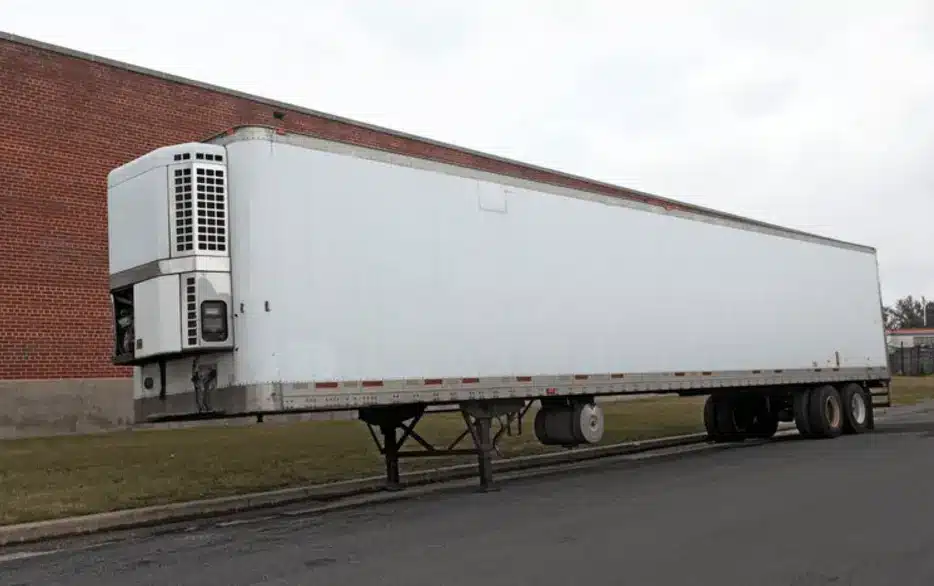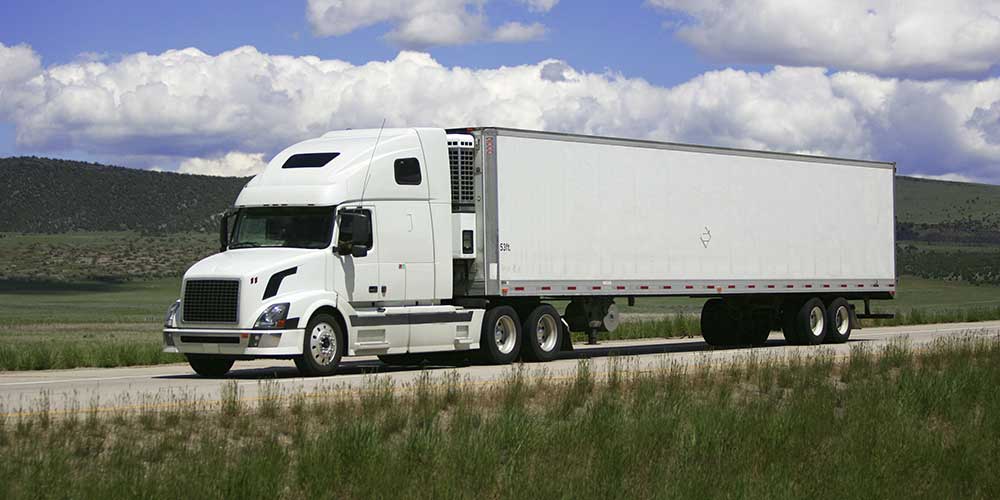Top Technologies in Transportation Refrigeration: Enhancing Effectiveness and Security
The landscape of transport refrigeration is undertaking considerable transformation, driven by technologies aimed at enhancing both effectiveness and safety. Trick developments such as smart temperature monitoring systems, eco-friendly cooling agents, and automated path optimization are crucial in attending to the market's difficulties. These technologies not only guarantee the stability of temperature-sensitive goods yet also add to sustainability initiatives. As these advancements remain to evolve, it is vital to discover their effects on functional methods and regulative conformity, prompting a better exam of just how they improve the future of transportation refrigeration.
Smart Temperature Keeping An Eye On Equipments
In the world of transportation refrigeration, wise temperature tracking systems have actually arised as a vital innovation for making certain the honesty of temperature-sensitive goods. These advanced systems leverage Internet of Points (IoT) technology to offer real-time information on temperature variations, making it possible for drivers to maintain optimum conditions throughout the supply chain. By constantly tracking the temperature level of chilled containers and cars, firms can quickly determine deviations that might endanger item high quality.

Furthermore, wise tracking systems often include automated notifies and notifications, permitting stakeholders to react without delay to any prospective issues. This proactive technique not just reduces the risk of perishing but likewise improves conformity with regulatory standards governing food safety and security and pharmaceutical transport.
The combination of data analytics within these systems additionally promotes predictive maintenance, helping drivers to visualize possible equipment failures before they take place. This ability minimizes downtime and enhances operational effectiveness, ultimately bring about cost savings.
Eco-Friendly Refrigerants
Smart temperature level monitoring systems play a crucial function in keeping product quality, but the performance of transportation refrigeration likewise pivots on the selection of cooling agents made use of. As environmental worries climb, the shift towards eco-friendly refrigerants has actually come to be vital. Conventional refrigerants, such as hydrofluorocarbons (HFCs), are notorious for their high Worldwide Warming Prospective (GWP), adding substantially to environment change. On the other hand, emerging choices like hydrocarbon-based cooling agents and hydrofluoroolefins (HFOs) present lower GWP alternatives, supplying both performance and sustainability.
These green refrigerants not just minimize environmental effect yet likewise line up with worldwide guidelines focused on eliminating damaging compounds. Their fostering can result in boosted energy effectiveness, inevitably reducing operating expense for transport refrigeration systems. In addition, using all-natural cooling agents, such as ammonia and co2, has gotten traction due to their excellent thermodynamic residential properties and reduced environmental impact.
Investing in environmentally friendly refrigerants is not merely a governing conformity procedure; it stands for a calculated choice that improves brand track record and cultivates consumer loyalty. thermo king truck refrigeration. By prioritizing lasting practices, business can add to a greener future while making certain the stability of delivered items
Advanced Insulation Materials
Making use of advanced insulation materials is vital for optimizing transport refrigeration systems, as they significantly boost energy effectiveness and preserve consistent temperature control. Traditional insulation approaches commonly drop short in preventing thermal transfer, causing boosted energy intake and refrigerated transportation thermo king rising and fall temperatures within cooled areas.
Arising products such as vacuum cleaner shielded panels (VIPs) and aerogels supply premium thermal resistance, enabling thinner profiles without endangering performance. VIPs, for instance, utilize a vacuum layer to reduce convective and conductive warmth transfer, making them perfect for space-constrained applications. Aerogels, recognized for their permeable and light-weight framework, supply outstanding insulation while considerably decreasing total system weight.
In addition, integrating stage change materials (PCMs) into insulation systems can even more support temperature levels during transportation. These materials absorb and release thermal energy, properly buffering versus exterior temperature level variants.
The assimilation of these innovative insulation products not only lowers the operational expenses related to power usage yet likewise expands the life span of temperature-sensitive goods. As the transport refrigeration sector proceeds to develop, the fostering of ingenious insulation innovations will certainly be critical in improving both efficiency and safety in chilled transport.
Automated Course Optimization
The efficiency of transportation refrigeration systems is significantly boosted through automated path optimization, which leverages real-time data and innovative formulas to establish the most effective paths for distribution. By examining numerous variables such as website traffic patterns, climate condition, and shipment windows, these systems can substantially minimize traveling time and gas intake.
Automated path optimization decreases human error and subjective decision-making, which can bring about inadequacies. This modern technology allows fleet supervisors to allocate resources a lot more effectively, ensuring that refrigerated products maintain their needed temperature level throughout the journey. By maximizing routes, firms can additionally boost consumer fulfillment through timely shipments.
Additionally, automated systems can adapt to unpredicted scenarios, such as roadway closures or unexpected website traffic spikes, enabling for dynamic rerouting. This versatility not only protects the honesty of temperature-sensitive products yet also contributes to total functional performance.
Carrying out automated course optimization can result in significant cost savings while minimizing the carbon footprint connected with transport. As organizations increasingly prioritize sustainability, this development stands apart as an important component in modern-day transportation refrigeration, aligning operational goals with environmental obligation. Eventually, automated path optimization represents a considerable improvement in the mission for effectiveness and safety in transport refrigeration.

Real-Time Data Analytics
Automated course optimization dramatically benefits from the integration of real-time data analytics, which supplies important insights into the performance of transport refrigeration systems. By using real-time data, transport operators can keep track of temperature changes and equipment efficiency, ensuring that disposable goods are kept within needed parameters throughout transportation. This aggressive method not just enhances the high quality of the delivered products but also reduces the risk of spoilage and loss.

In addition to boosting efficiency, real-time analytics enhances security by ensuring conformity with regulative criteria for temperature control. This not only protects public health yet likewise strengthens a firm's online reputation - thermo king truck refrigeration. As the transportation refrigeration industry progresses, the combination of real-time data analytics emerges as a keystone for driving development, sustainability, and operational excellence
Conclusion
Finally, the improvements in transportation refrigeration dramatically boost both effectiveness and safety and security within the industry. Smart temperature surveillance systems and real-time data analytics give important oversight, while environmentally friendly refrigerants and progressed insulation products contribute to sustainability and power efficiency. Furthermore, automated course optimization algorithms not just reduce traveling time yet also lessen ecological influence. Collectively, these advancements stand for a crucial evolution in transportation refrigeration, making sure compliance with regulatory criteria and advertising a greener future.
The landscape of transport refrigeration is going through significant improvement, driven by innovations intended at improving both effectiveness and safety.Smart temperature tracking systems play an important role in keeping item top quality, but the efficiency of transport refrigeration additionally pivots on the selection of refrigerants utilized. Their adoption can lead to improved energy efficiency, eventually decreasing operating expenses for transport refrigeration systems. Eventually, automated route optimization represents a substantial development in the quest for efficiency and safety and security in transportation refrigeration.
In verdict, the developments in transportation refrigeration considerably boost both efficiency and safety within the industry.